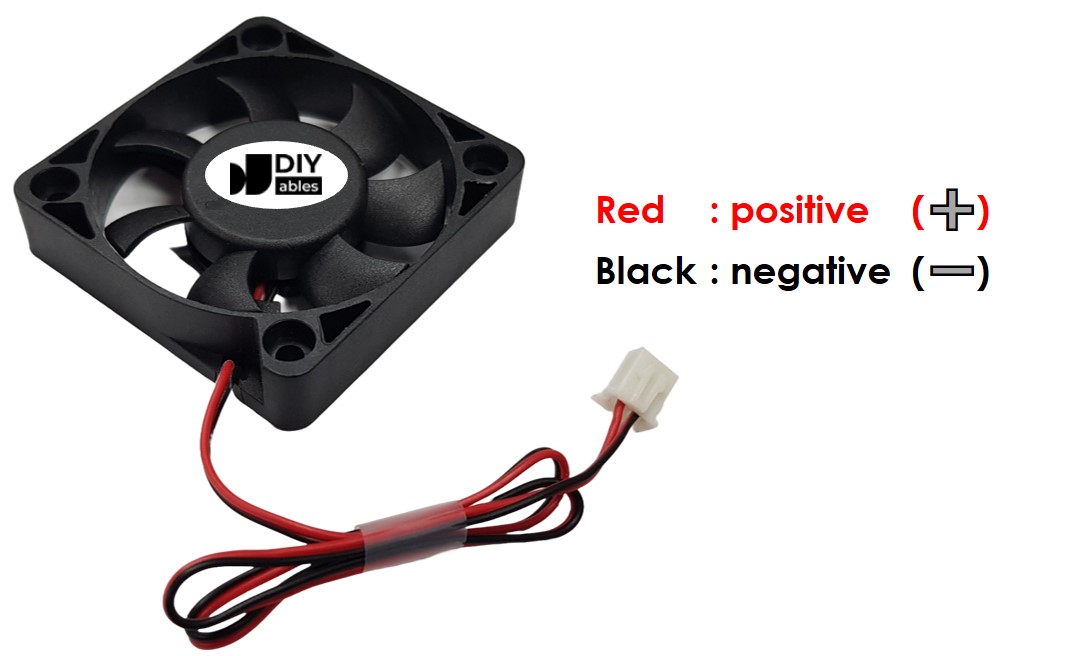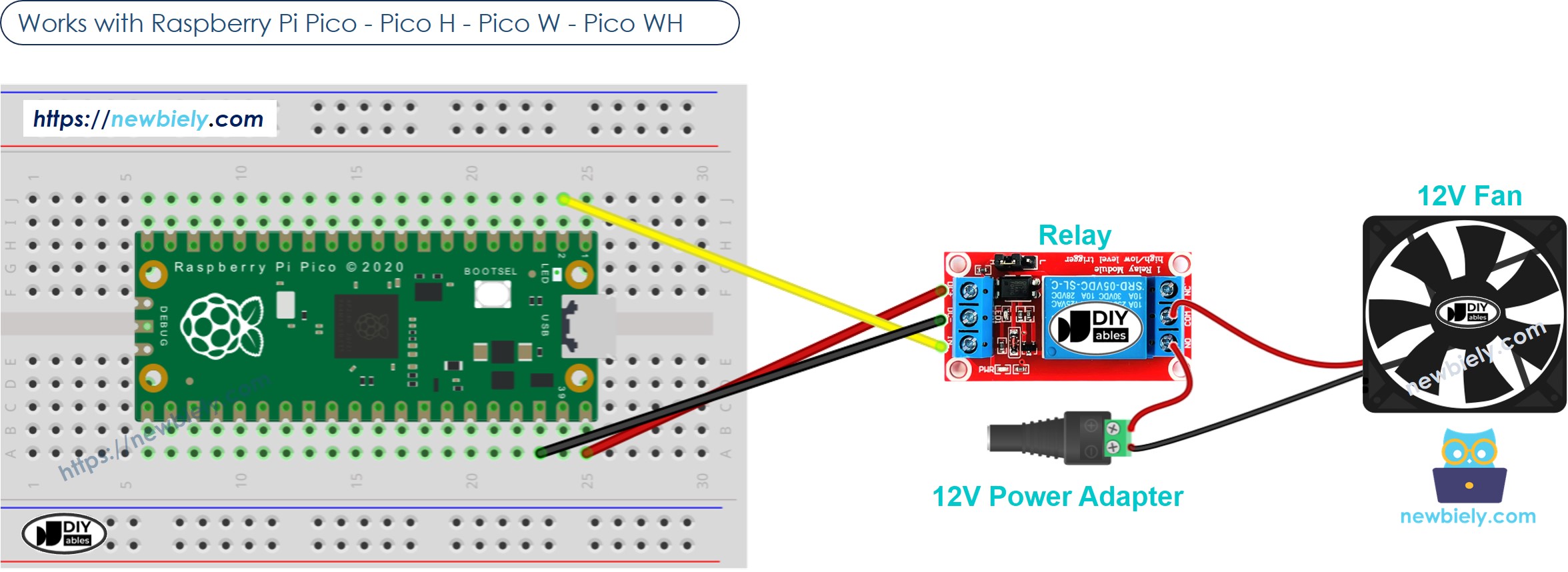Raspberry Pi Pico - Control Fan
This tutorial instructs you how to manage a 12V or 5V fan with a Raspberry Pi Pico. We will cover:
- How to connect a 12V/5V fan to a Raspberry Pi Pico
- How to code the Raspberry Pi Pico to switch the fan on and off.

Hardware Preparation
Or you can buy the following kits:
| 1 | × | DIYables Sensor Kit (30 sensors/displays) | |
| 1 | × | DIYables Sensor Kit (18 sensors/displays) |
Additionally, some of these links are for products from our own brand, DIYables .
Overview of DC Fan
Pinout
A DC fan usually comes with two pins.
- Connect the black pin, labeled as negative (-), to the negative wire of the DC power supply.
- Connect the red pinned labeled as positive (+), to the positive wire of the DC power supply.

Make sure that the voltage of the DC power supply is the same as the voltage needed by the fan. In this guide, we use fans that require 12VDC and 5VDC.
How to Control Fan
- When a DC fan uses a 12V/5V power supply, it operates at maximum speed.
- When a DC fan uses a 12V/5V PWM signal, you can adjust the speed of the fan.
In this guide, we will teach you how to turn a fan on and off using a Raspberry Pi Pico. We will show you how to control the fan speed in another guide. To control the fan, we connect a relay between the Raspberry Pi Pico and the fan. The Raspberry Pi Pico uses the relay to operate the fan. If you're new to relay or MicroPython programming for the Raspberry Pi Pico, I recommend checking out the below tutorial:
Wiring Diagram

This image is created using Fritzing. Click to enlarge image
Raspberry Pi Pico Code
This code turns the fan ON for five seconds and then turns it OFF for another five seconds.
Detailed Instructions
Please follow these instructions step by step:
- Ensure that Thonny IDE is installed on your computer.
- Ensure that MicroPython firmware is installed on your Raspberry Pi Pico.
- If this is your first time using a Raspberry Pico, refer to the Raspberry Pi Pico - Getting Started tutorial for detailed instructions.
- Connect the Raspberry Pi Pico to the fan according to the provided diagram.
- Connect the Raspberry Pi Pico to your computer using a USB cable.
- Launch the Thonny IDE on your computer.
- On Thonny IDE, select MicroPython (Raspberry Pi Pico) Interpreter by navigating to Tools Options.
- In the Interpreter tab, select MicroPython (Raspberry Pi Pico) from the drop-down menu.
- Ensure the correct port is selected. Thonny IDE should automatically detect the port, but you may need to select it manually (e.g., COM3 on Windows or /dev/ttyACM0 on Linux).
- Copy the above code and paste it to the Thonny IDE's editor.
- Save the script to your Raspberry Pi Pico by:
- Click the Save button, or use Ctrl+S keys.
- In the save dialog, you will see two sections: This computer and Raspberry Pi Pico. Select Raspberry Pi Pico
- Save the file as main.py
- Click the green Run button (or press F5) to run the script. The script will execute.
- Check how the fan is working.
If you name your script main.py and save it to the root directory of the Raspberry Pi Pico, it will automatically run each time the Pico is powered on or reset. This is useful for standalone applications that need to start running immediately upon power-up. If you name your script another name other than main.py, you will need to manually run it from Thonnys's Shell.
Code Explanation
The comments in the Raspberry Pi Pico code above explain the details.
